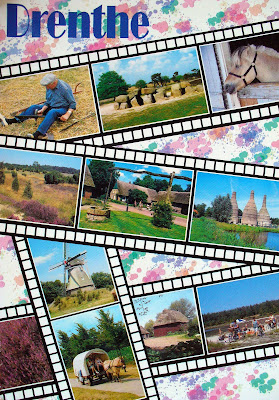This card reached me from Taiwan. It shows the view of Mount Ali, or Alishan in Chiayi County. Alishan is a major landmark and tourist destination in Taiwan and it has become famous for its high mountain tea and wasabi production. In 2001 the area was declared a national scenic area. The Alishan mountain range has an average altitude of 2500 meters. Until the 1970s the logging industry was prominent in the area. The Alishan Forest Railway is a reminder of the early logging days, when narrow-gauge railways facilitated the transport. Today the Alishan highway, built in the 1980s, is the primary means of transport for tourists. They can visit the villages and temples within the Alishan National Scenic Area, and enjoy mountain wilderness along the hiking trails, and most of all the beautiful views from Mount Ali.
Journey to Dublin
15 years ago








